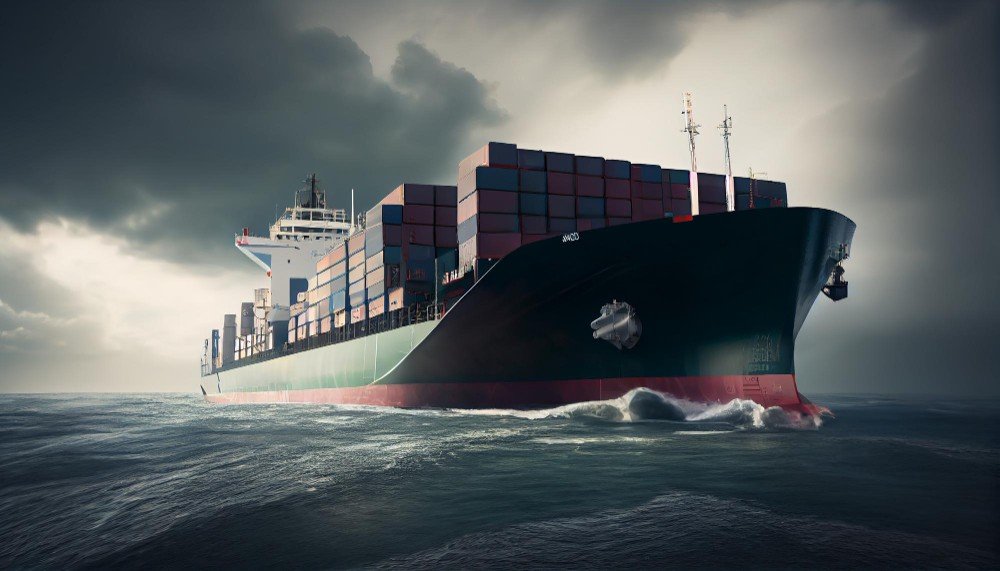In the age of global commerce, transporting goods between countries has become essential for businesses, economies, and consumers worldwide. While we often take these logistics for granted, the journey behind each item is complex, with multiple moving parts and strategic decisions. Sea freight is a cornerstone of this system, handling more than 80% of global goods movement. Despite advancements in air and land transport, ocean freight remains indispensable for its scalability and cost-efficiency, especially when it comes to bulk shipments.
Why Sea Freight is Crucial for Global Trade
Shipping by sea is one of the oldest methods of moving goods across long distances, and it’s as relevant today as it was centuries ago. But what makes sea freight so vital in modern trade?
1. Scalability and Capacity
Sea freight offers unmatched capacity compared to other modes of transport, making it ideal for businesses that need to ship large volumes. Standard containers can hold vast amounts of goods, and with Full Container Load (FCL) or shared Less than Container Load (LCL) options, businesses can choose the shipping strategy that best matches their needs and budget.
2. Economical for Bulk Shipments
Unlike air freight, which calculates costs primarily by weight, sea freight charges depend on the container’s size and route, making it more economical for bulky or heavy items. Shipping companies benefit from economies of scale, offering businesses a cost-effective solution for transporting items like machinery, vehicles, or raw materials.
3. Reduced Environmental Impact
Sea freight’s lower carbon footprint is particularly relevant in an era where sustainability is becoming a priority. Compared to air freight, which has a much higher per-mile carbon emission, ocean shipping is greener. The shipping industry is also continuously investing in cleaner fuel options and more fuel-efficient vessels, further reducing its environmental impact.
Full Container Load (FCL) vs. Less than Container Load (LCL)
Understanding FCL and LCL options helps businesses choose the best approach based on their shipment size, cost goals, and delivery timeline.
Full Container Load (FCL)
- What It Is: FCL means the entire container is dedicated to one shipment. Businesses that have enough cargo to fill a full container typically choose FCL for security and efficiency.
- Benefits: FCL reduces handling, which lowers the risk of damage. Since FCL containers go directly from port to port without being opened, they often reach destinations faster than shared containers.
Less than Container Load (LCL)
- What It Is: LCL allows multiple shippers to share space in a single container. This option is suitable for smaller shipments that don’t fill an entire container.
- Benefits: LCL makes sea freight accessible to businesses with smaller volumes, providing the cost benefits of sea shipping without the need to commit to a full container.
For companies looking to optimize their shipping strategy, consulting an ocean freight provider about FCL and LCL options can offer a cost-effective and efficient way to reach international markets.
Factors That Influence Sea Freight Costs
Sea freight costs vary depending on several key factors. Understanding these variables can help businesses budget and make informed decisions.
- Container Size and Type
While standard 20-foot and 40-foot containers are the most economical, specialized containers like refrigerated or open-top containers come at a premium. The container type depends on the cargo’s requirements, and each type has a distinct pricing structure. - Route and Distance
Shipping costs increase with distance, but popular trade routes between major ports offer more competitive rates. Destinations with limited accessibility or complex transit paths generally incur higher costs due to additional handling or transfers. - Customs and Duties
Each country imposes its own import/export fees, which can affect the overall shipping expense. Understanding the customs regulations of both the origin and destination countries helps businesses avoid unexpected fees or delays. - Additional Charges
- Fuel Surcharges: These vary based on global fuel prices and are added to cover transportation costs.
- Insurance: Cargo insurance is essential for high-value shipments, covering loss or damage that may occur during transit.
- Seasonal Demand
The demand for shipping space can fluctuate, especially during peak seasons like holiday months. Businesses can expect higher rates and longer wait times during these periods.
Choosing the Right Ocean Freight Provider
Selecting the right logistics partner can streamline the shipping process, reduce costs, and offer peace of mind. Here are some factors to consider when choosing a provider:
- Experience and Expertise: Providers with strong industry experience can navigate the complexities of international shipping, offering valuable insights into customs, compliance, and route optimization.
- Transparent Pricing: Look for a provider with clear pricing to avoid hidden costs. Transparent all-in-one pricing helps businesses budget accurately.
- Tracking and Technology: Real-time tracking allows companies to monitor their shipment’s progress, ensuring timely updates on any delays or issues.
- Comprehensive Service Options: Top providers offer a variety of options, from door-to-door delivery and warehousing to customs clearance, simplifying logistics for clients.
A reputable ocean freight provider can make a significant difference in the overall efficiency and reliability of the shipping process.
Preparing for Sea Freight: The Importance of Documentation
Accurate documentation is essential in sea freight, helping businesses clear customs efficiently and avoid delays. Here are the primary documents involved in the shipping process:
- Bill of Lading (BOL): The BOL is a contract between the shipper and carrier, detailing the goods and shipping arrangements. It serves as a receipt and proof of ownership.
- Commercial Invoice: This document specifies the value of the goods, used by customs authorities to assess duties and taxes.
- Packing List: Provides an itemized list of the cargo, including dimensions, weight, and packaging details. Customs and logistics teams use this for processing.
- Insurance Certificate: Protects against financial loss in case of damage or unforeseen events.
Working closely with an experienced logistics provider ensures that documentation is accurate, reducing the risk of delays at customs checkpoints.
The Future of Sea Freight: Technological Innovations and Sustainability
With ongoing advancements in technology and a growing focus on sustainability, sea freight is evolving to meet modern demands. From digital tracking to eco-friendly initiatives, these trends are reshaping the industry:
- Blockchain for Transparency
Blockchain technology can securely record transactions, improving transparency in the logistics process. This is especially useful for verifying documents, preventing fraud, and reducing paperwork. - Internet of Things (IoT) for Real-Time Tracking
IoT devices allow shippers to track container conditions, ensuring that items like perishable goods are maintained within specific temperature or humidity ranges throughout the journey. - AI and Predictive Analytics
AI-driven analytics help logistics teams optimize routes, predict peak season demand, and adjust shipping schedules, leading to more efficient and cost-effective transport. - Greener Shipping Options
As companies prioritize eco-friendly practices, the maritime industry is investing in sustainable solutions like biofuels and fuel-efficient vessels. Carbon offset programs and alternative energy sources are also becoming more common, providing businesses with environmentally friendly shipping options.
For businesses prioritizing sustainability, choosing an eco-conscious ocean freight provider can help reduce their carbon footprint while supporting global trade.
Final Thoughts: Sea Freight as a Strategic Asset for Business Growth
Sea freight is much more than a means of transporting goods; it’s a strategic asset that enables businesses to grow and thrive in international markets. With its cost advantages, scalability, and sustainable practices, sea freight remains a preferred choice for global logistics. From understanding cost factors to choosing the right shipping method, businesses that embrace the potential of sea freight can position themselves for long-term success.
Whether you’re shipping raw materials, finished products, or oversized machinery, leveraging ocean freight in your supply chain can streamline operations, reduce expenses, and expand your reach. As technology and sustainability practices continue to enhance the industry, sea freight remains a reliable and future-ready option in global logistics.











